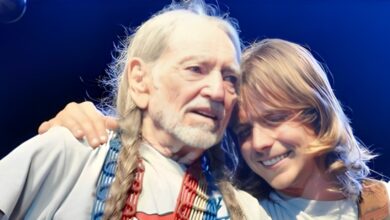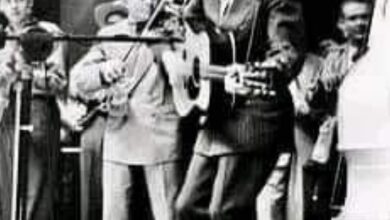The Charm of Patsy Cline Radiates in “Crazy”
“Crazy” has proven to be an indelible piece of American music history, resonating with audiences across generations. More than a mere song, it embodies the collective experience of love’s trials, particularly the unvarnished pain of letting go. The poignant lyrics were penned by Willie Nelson, who would later become a music icon himself, showcasing his exceptional songwriting talent alongside his well-known performing career. Nelson’s journey as an artist, which included wrestling with his own musical identity, found a pivotal moment in the creation of “Crazy.” His ability to weave complex emotions into lyrics is evident in the way he captures the nuances of heartbreak and longing.
When Patsy Cline’s version was released in 1961, she infused the song with her trademark blend of emotion and craftsmanship. Cline’s rich contralto voice conveyed a profound sense of yearning that made her rendition uniquely powerful. The song became synonymous with her name, solidifying her status in country music. At that time, Cline was already making waves with her strong vocal performances, but “Crazy” took her career to unprecedented heights. It highlighted her ability to connect with listeners, drawing them into the depths of her emotional landscape.
The orchestration accompanying “Crazy” plays a crucial role in enhancing its overall impact. Rich strings and gentle piano lines create a lush backdrop that mirrors the song’s emotional depth. Cline’s interpretation turns listening into a visceral experience, as her voice dances over the arrangement, seamlessly integrating her feelings into the music. This artistic synergy is what allows listeners to feel the heartache so acutely, rendering it a timeless classic that continues to elicit deep emotional responses.
Despite some initial reluctance from the music industry, Cline’s passionate interpretation and her producer’s belief in the song’s potential ultimately led to its commercial success. The track not only topped country charts but also found a crossover audience in pop music, a rare feat that speaks volumes about its broad appeal. Cline’s ability to transcend genre limitations marked a shift in country music, paving the way for other artists to explore similar paths of cross-genre creativity.
Cline’s tragic demise in 1963 marked a somber chapter in the song’s history. At just 30 years old, her life was cut short, leaving behind a legacy that was both profound and incomplete. The fact that she would not experience the full acclaim of her music imbued her songs, including “Crazy,” with a deeper level of nostalgia and loss. It transformed her work into a testament to the fragility of life and the enduring nature of art, allowing her music to speak to the hearts of many who grieve, not just for her, but for love itself.
Willie Nelson’s later rendition of “Crazy” further speaks to the song’s inherent versatility. His laid-back and conversational style lent a different shade to the song, demonstrating that the same piece can evoke varied emotions through different musical interpretations. Nelson’s version, with its softer, more reflective tone, invites listeners to experience the song from another perspective, proving that “Crazy” is indeed a malleable piece of artistic expression.
Throughout the decades, “Crazy” has been covered by a myriad of artists across various genres. Musicians like Linda Ronstadt and Diana Krall have brought their unique styles to the song, showcasing its adaptability. Each rendition honors the original while adding personal nuances, reinforcing the emotional depth that the lyrics convey. The phenomenon of diverse interpretations underlines the song’s significance and the universal nature of its themes, which can resonate across different musical landscapes.
In contemporary culture, “Crazy” remains a significant touchstone, frequently featured in films and television, enabling new generations to discover and connect with its emotional core. Its popular status among aspiring performers and established artists alike demonstrates its lasting relevance. Many singers see it as a rite of passage to cover “Crazy,” using it to not only display their vocal prowess but also to connect with audiences on a profound level.
The narrative embedded in “Crazy” reflects the rich storytelling tradition in country music, illustrating how the genre articulates complexities of human emotion. The song is not merely about heartache; it delves into the intricacies of love and memory, capturing the bittersweet nature of romantic relationships. As listeners and performers alike engage with the story, “Crazy” serves as an essential part of the country’s musical landscape and cultural heritage.
As “Crazy” continues to find its way into the hearts of listeners, it acts as a bridge between past and present. The song encapsulates the timeless allure of love and loss and its accompanying emotional struggles. Its lyrical depth and musical elegance allow it to transcend cultural boundaries, ensuring that it remains a vital part of the collective American musical experience. Ultimately, “Crazy” is not just an enduring classic; it is a powerful narrative that serves as an evergreen reminder of the human condition, intertwining stories of heartache with the resilient spirit of love.





